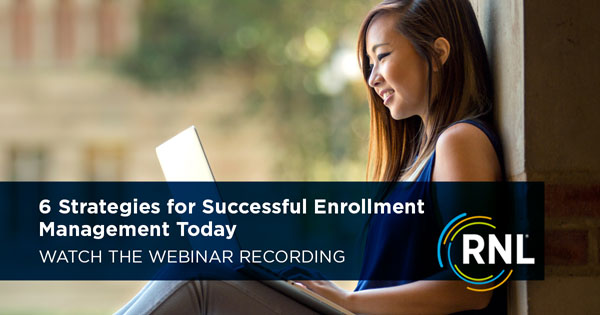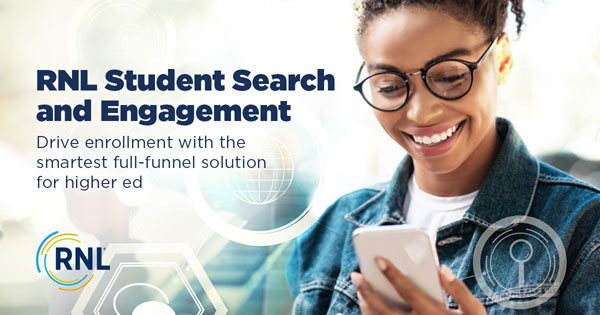enrollment
Four Strategic Stars by Which to Steer Your Enrollment Ship
We’re almost to the end of the toughest academic year ever! After a year of COVID and an unprecedented crisis for higher education, there appears to be hope that the pandemic will recede by this coming fall. That’s the good news.
The less-good news is that there were already many challenges bedeviling enrollment managers before the pandemic struck, such as:
- Over the last 10 years we have witnessed the longest contraction during which enrollment shrunk by 7 percent (according to the National Center for Education Statistics).
- Although projections of high school graduates have improved and are expected to grow through 2025, they will then decline through 2037.
- Between 2011 and 2020, the discount rate for 4-year private schools rose from 38 percent to nearly 45 percent.
What does all this mean? That even as the light begins to glimmer at the end of the pandemic, enrollment growth will not come easily for any colleges and universities. Further, the money required to reimagine, reframe, and respond is going to be tight.
However, there are strategies campuses can use now to get ahead of these trends and lay a foundation for success. Here are four from a recent webinar I hosted that will help you make informed, strategic decisions that can produce enrollment results.

1. Build your enrollment pool by design not by chance
As the standardized test and list source climate evolves and impacts how campuses obtain lists of prospective students, RNL has helped its campus partners identify which lists to use to build their pools. The real test of the quality of the pool is not just more students, but the right students. And if the students at the top of your funnel are aligned with your enrollment goals, then those students are likely to yield and retain at higher rates.
This is building the pool by design instead of chance. It requires:
- Clear connection between mission and marketing strategy.
- Proven source lists.
- Data-driven attention to the right timing and sequencing of outreach activities.
- Data-driven attention to the best channels for population sub-segments.
2. Engagement drives enrollment
Tracking student engagement helps you assess the quality of the students in your recruiting pool. You can start to measure engagement with metrics such as open rates and click-through rates, but true engagement really involves students making meaningful moves toward enrolling on their own. Can you connect the dots between who in the inquiry pool has started to engage by going to landing pages or exploring your website?
To ensure that student engagement is powerfully persuasive, we recommend these proven elements:
- Blend traditional search tactics with digital and social media contacts to foster multichannel lead generation.
- Digitally connect prospective students with members of the campus community to foster relationships, answer questions, and build interest.
- Involve parents in your outreach as they will be influencers not only to their own student, but to other parents.
- Invest in behavioral analytics to provide your team with real-time data that will guide their use of time and increase conversion rates.
- Meet students where they are: their phones! RNL mixes tried-and-true strategies with artificial intelligence, automation, social media, and digital communications to deliver hyper-personalized content that has proven results in search, parent engagement, and inquiry-to-applicant conversion. (Learn more about how we can do this for you.)
3. Develop an annual plan as well as 3-5-year plans.
The pandemic put all of us in hyper-reactive mode for over a year. Moving forward, it is important to think long-term again. Discuss the opportunities for market penetration and market development in existing markets and through program development, and also consider how you can expand into new markets. Analyze the evolving financial needs of the families and skill/knowledge needs of industry in your recruiting regions.
- Look at the FAFSA filer rate in your area to guide plans for pricing and financial aid.
- Assess the market for overlap of your institutional mission and programming and employer demand for graduates with specialized degrees or certificates.
- Identify how you’ll monetize new initiatives to make sure they’re worth the investment and how you’ll evaluate whether the plan is working.
4. Award financial aid so students get what they need and expect to enroll.
The final, vitally important, guiding star is a financial aid awarding strategy that’s tuned to the needs of students while also aligning with your enrollment goals for the populations you’ve identified as priorities. Your awarding strategy has to work both for those families who need aid and the revenue your institution needs to provide a quality education.
RNL helps campus partners develop award models that provide real-time data as well as projections of how changes in awards will affect enrollments. For example, you can test variables to ascertain how changes in your awarding could affect enrollment. Or measure the potential impact of awarding changes on revenue. This level of transparency guides decision-making, ties enrollment goals to financial implications, and allows campus leaders to nimbly adjust to changes in the market with a clear-eyed sense of what a swerve will entail.
Watch our webinar to dive into more strategies for successful enrollment management
I covered six key strategies in a recent webinar, and I invite you to watch my session with my colleague Jason Langdon. This webinar covers what’s working now for public and private institutions around the country. Watch it now.
We also can talk to you about your best enrollment strategies. Reach out to us to schedule a free consultation with our enrollment experts.
Maximize the impact of your student search campaigns on enrollment
Ask for a free walkthrough of RNL Student Search and Engagement and see how you can increase volume at the top of the funnel, increase conversion and velocity through the funnel, and achieve your enrollment goals.


